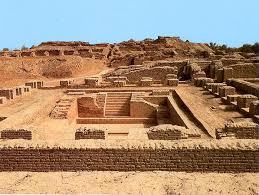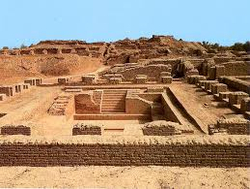Lessons in sustainability from India’s past: Revisiting the ecological roots of sustainability

Sustainability, a word that carries such importance today, became a societal goal post 1987 after a report submitted by the Brundtland Commission. The definition used in this report integrated three pillars of economic, social and ecological development under the banner of sustainable development.
Since then, the discourse around sustainability has expanded to include many different interpretations and meanings. Broadly speaking, there are two main camps. Some argue that human innovation is the key to sustainable development. They believe we just need manmade capital – for instance, in the form of technological advancements and better infrastructure – to correct imbalances and degradation in the natural environment. However, there are others who believe the origins of sustainability are deeply rooted in ecological theories. Advocates of this interpretation place more importance on natural capital and ecological balance, arguing that economic growth and social progress depend on this.
The ecologically-focused interpretation of sustainability dates back quite some time – as early as the early 18th century, when Hans Carl von Carlowitz, the Chief Mining Administrator in Freiberg, Germany introduced the concept of sustainable use – Nachhaltende Nutzung. He aimed to ensure mine construction would not jeopardize the regeneration of trees needed to support this operation. Then, later that century, English cleric and economist, Thomas Malthus, proposed the ground breaking carrying capacity concept, based on the idea that our environment can support a limited population given the demands they place on natural resources and systems.
If we look back at collapsed ancient civilizations in South Asia, we can see how applying these lessons and concepts might have led to different outcomes and greater longevity.
In parts of Afghanistan, Pakistan and India, lie the remains of a civilization. Thought to be one of the most advanced of its time, the Indus Valley Civilization comprised a population of over five million spread across cities which were considered to be the first urban centres in the region. Flourishing trade with Central Asia, investment in the arts, advanced infrastructure and an egalitarian social structure with a relatively low wealth concentration impressed historians and scholars. Urban planning in that era was more visionary than that of the modern day country equivalents, with orange baked brick houses equipped with internal plumbing, a complex drainage and sewerage system, a functioning water supply system and well defined neighbourhoods.
However, things started to go downhill in 1700 BCE, and by 1900 BCE a majority of cities in the Indus Valley civilization were abandoned. Historians believe there are a number of reasons, including decline in trade, climate change – such as weakening of monsoons, change in the course of the river Ghaggar Hakra, aridification – and a break down in the social structure of the city through overcrowding and outmigration.
Viewing this within the framework of an ecological basis for all three pillars of sustainability, we can see what might have ended the Indus Valley Civilization:
Climate change and the ecological pillar: Changes in the course of the Ghaggar Hakra and the Indus rivers, along which cities were located, as well as patterns of flooding and a weakening of the monsoons, led to aridification and drought impacting agriculture and the water supply within the cities.
Outmigration, fragmentation of the population and the social pillar: Aridification, water scarcity led to many communities scattering across the region looking for more optimal areas where they could cultivate their crops. They established smaller farms whose surplus could not meet the needs of the larger cities.
Trade decline and the economic pillar: A disruption to agricultural production resulting from climate change also weakened trade and the ability for cities to sustain their population. This was exacerbated by political upheaval interrupted trade in Mesopotamia, their primary trade partner.
Overcrowding and carrying capacity: Cities and villages became over crowded as the population grew. Coupled climate change, which contributed to food insecurity and water scarcity, the cities could no longer support their population.
The population of the Indus Valley Civilization, which comprised of at least 1,000 cities and settlements and spanned four countries, pales in comparison to a city like Delhi with a population of at least 10 million. The natural changes in climate which contributed to the demise of the Indus Valley Civilization, are now accelerating towards dangerous, irreversible shifts, overwhelmingly being driven, since the mid-20th century, by anthropological activities. Forest cover is depleting, natural resources are rapidly being over-exploited, over consumed and polluted. We are seeing an increase in the number of climate refugees displaced from their homes by rising sea levels, droughts and floods. The present narrative is bleak.
However all is not lost. Mistakes can be learned from, successes can be replicated. Climate change has always been a wild card just as history has always shown us the writing on the wall. The past is replete with lessons in sustainability but will we take heed? Perhaps it is time to shift our focus from using technological innovation as quick fixes to synergising our lifestyles to be more at equilibrium with the natural environment. Every day we are pushing the biophysical limits of our planet to the point where we now stand at the edge of a precipice. Can we instead live within those limits? Our ancestors did it. Why can’t we?
This is a continuation of a previous post. Check back for more upcoming lessons from India’s past.
